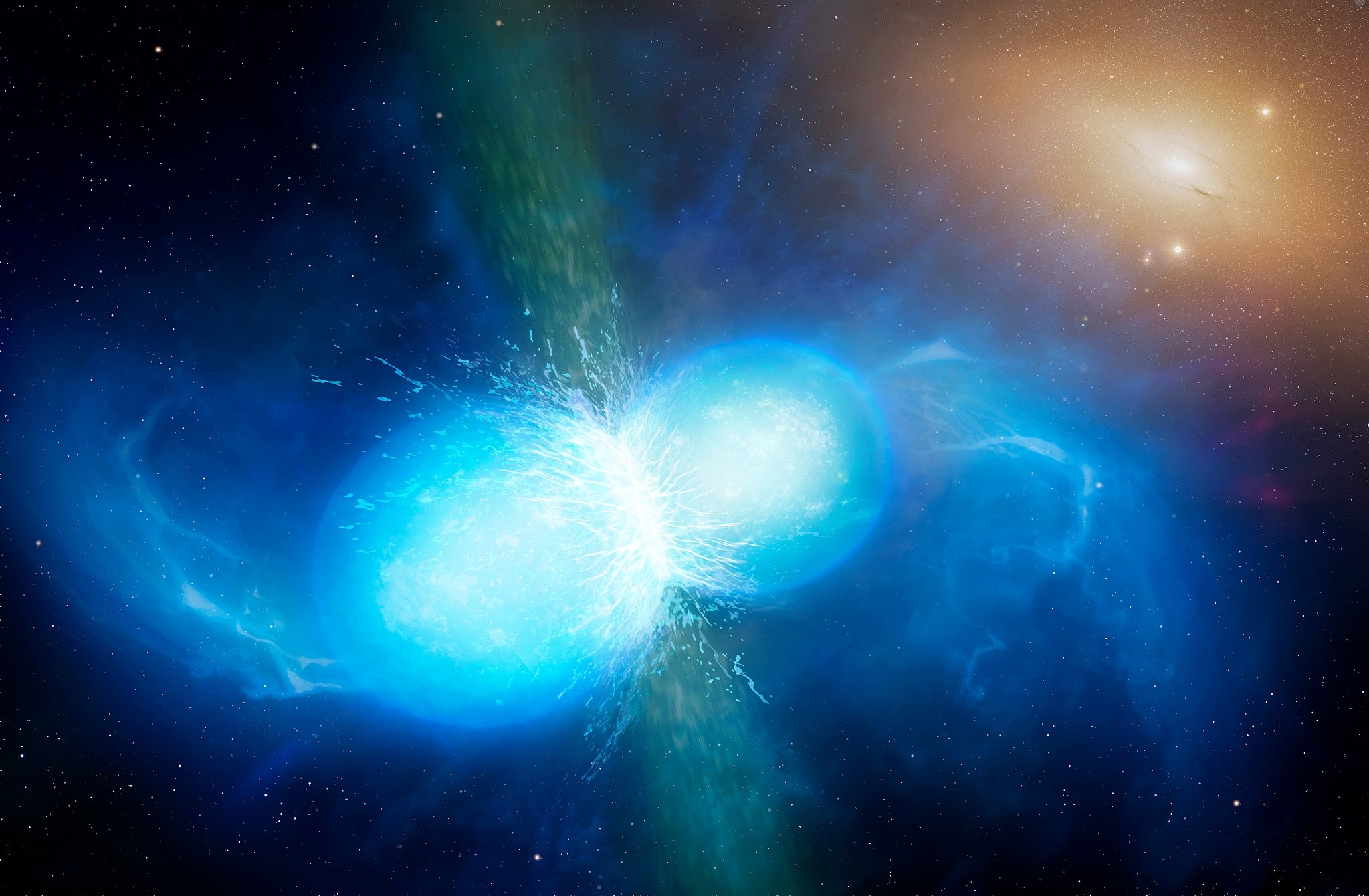
UC Santa Barbara and Las Cumbres Observatory partner to lead the future of multi-messenger astronomy
Modern astronomy happens at the speed and scale of our globalized, interconnected world. And like the rest of society, it requires faster, more robust networking for scientists to keep up with new discoveries.
To develop communications infrastructure to coordinate and connect multi-messenger astrophysics research across the globe, the National Science Foundation (NSF) recently approved a proposal by the National Center for Supercomputing Applications (NCSA) and the Scalable Cyberinfrastructure to support Multi-Messenger Astrophysics (SCIMMA). Researchers from UC Santa Barbara and the Las Cumbres Observatory (LCO) in Goleta, are among the principal scientists leading this effort.
As the name suggests, multi-messenger astrophysics (MMA) brings together different “messengers,” or ways of studying the universe, such as photons, gravitational waves and high-energy particles. By combining these different data points, MMA can probe questions in fundamental physics through astrophysics. For example, gravitational waves from the first and, to date, only known merger of two neutron stars — a kilonova — detected by the LIGO-VIRGO-Kagra Collaboration provided astronomers insight into how the heaviest elements in the universe were synthesized.
The new communications tools will allow astronomers and physicists to communicate more rapidly, robustly, and in a manner that both a human and a machine can read. For instance, physicists can send announcements of approximately where in the sky two neutron stars merged together. These can immediately be read by software, which triggers robotic telescopes — such as those of the Las Cumbres Observatory — to start observing the region, even if astronomers are asleep. Astronomers can then report their findings in a way that will instantly be accessible to other telescopes and facilities. The infrastructure is cloud-based, robust to single-point failures and has low latency. This allows for more-rapid action by astronomers to quickly observe changing phenomena before they disappear.
“At Las Cumbres Observatory, we have robotic telescopes capable of responding in seconds to a new astronomical event,” said Andy Howell, one of the project’s principal investigators, who holds a joint appointment at LCO and UC Santa Barbara. “The old communications infrastructure in astronomy literally dates from the telegraph era and can take hours to get a message through. That’s caused us to miss a lot of exciting new physics. But with these new tools, our machines can talk to other machines, allowing us to operate faster than humans are even capable of, which opens up exciting new frontiers of rapid astrophysics.”
“More kilonovae could also teach us about the nature of dense nuclear matter, the formation and structure of jets and gamma-ray bursts, and the nature of gravity in the few seconds before a black hole is created in the merger, all while helping to resolve open questions in cosmology,” said Gautham Narayan, deputy director for the Center for AstroPhysical Surveys at NCSA and principal investigator of the project. “Coordinating multiple facilities to enable these kinds of discoveries is the key reason for SCIMMA.”
The National Center for Supercomputing Applications will lead a team of institutions for the more-than $3.5 million, four-year project working to build standardization between different subfields, as well as enable rapid response and global coordination of limited resources. This will require a massive leap forward in the communications infrastructure currently employed. In addition to Howell, the project’s principal investigators also include UC Santa Barbara computer scientist Rich Wolski.
“At UCSB, we are excited to be contributing state-of-the-art cloud computing research and research artifacts to help develop the next generation of tools for the MMA community,” said Wolski, a professor in the computer science department. “Science, at this scale, must be a team sport that takes advantage of the best results from technology disciplines like computer science. The SCIMMA effort, funded by the Cyberinfrastructure for Sustained Scientific Innovation (CSSI) program, is forward-looking in this regard, and we are pleased to be bringing UCSB’s computer science strength in scalable distributed systems to this leading-edge effort.”
NCSA’s Narayan added, “Even a relatively modest investment can produce huge gains in the efficiency of billion-dollar investments for experiments such as the LIGO-VIRGO-Kagra Collaboration, the IceCube Neutrino Experiment and the Vera C. Rubin Observatory. This will have transformative effects in automating and speeding up both communications and research in other areas of time-domain science.
“But the vision behind SCIMMA is even grander,” he continued. “What we are doing is really laying the foundation for a unified ecosystem for future astrophysical surveys. By breaking down the barriers between these experiments and building a shared infrastructure where researchers can collate, process and analyze data from all of these experiments together, we are working to enable science that simply has not been possible.”
Initial copy provided by Andrew Helregel.
Harrison Tasoff
Science Writer
(805) 893-7220
harrisontasoff@ucsb.edu




